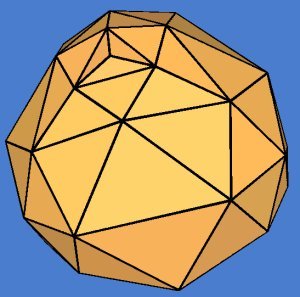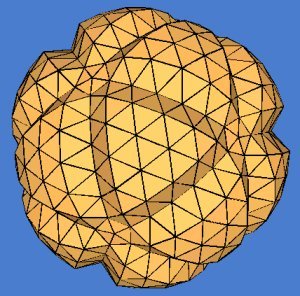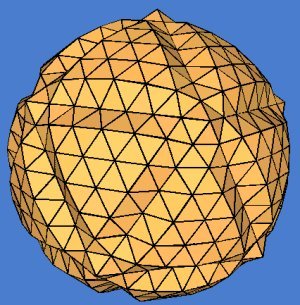





David Anderson
Originally written in August 1999
I have always seemed to end my work with the creation of geodesic patches; I say the patches may be constructed to fit together into a geodesic shell and pretty much leave it at that. However, building real structures requires more than just a good word and the wave of a hand. It is time to properly visualize the geodesic structures.
So, once again I tore down my geodesic patch code and resurrected it in a compatable, but more capable form. The new development can create the geometry with any size, frequency, projection parameter, and blending function coefficients, in either a spherical-edge or flat-edge projection.
But instead of just a single patch, the new code builds all the faces of a sphere: the icosahedral geodesic's twenty faces, the octahedral's eight, and the tetrahedral's four. The structures may then be rendered into VRML for a viewer's inspection.
The following images are screen captures of the VRML display:
 |
5 frequency icosahedral geodesic sphere |
 |
5 frequency octahedral geodesic sphere |
 |
5 frequency tetrahedral geodesic sphere |
 |
7 frequency icosahedral geodesic sphere, with the stadium blending function, projection parameter of 0.7, and spherical edge projection |
 |
7 frequency icosahedral geodesic sphere, with the stadium blending function, projection parameter of 0.7, and flat edge projection |
The intention of this visualization, as is most computer graphics, is to virtually build viewable models of a world - instead of actually having to realize them physically. The generation tools may be used to build virtual models prior to their realization in real materials; the models may be refined and customized to the needs of a particular real structure.